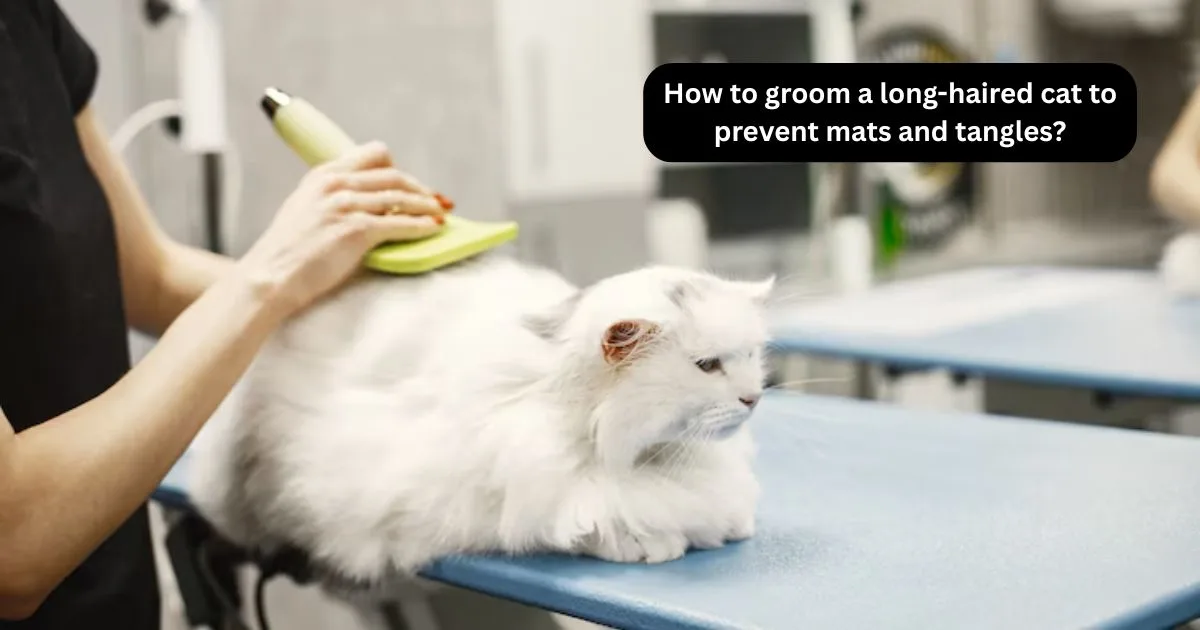Long-haired cats are a beauty to behold, with their flowing coats and regal demeanor. However, maintaining their luscious fur requires consistent grooming. Mats and tangles can lead to discomfort, skin problems, and even infections if left untreated.
Grooming is not only essential for their health but also an opportunity to bond with your feline friend. This article provides a detailed guide to grooming long-haired cats, complete with tips, FAQs, and a handy table summarizing tools and techniques.
Why Is Grooming Important for Long-Haired Cats?
Long-haired cats, such as Persians, Maine Coons, and Ragdolls, have coats that are prone to tangling and matting. Regular grooming helps to:
- Prevent mats and tangles that can pull on the skin and cause pain.
- Reduce shedding and minimize hairball formation.
- Keep the coat clean and free from dirt, debris, and parasites.
- Promote healthy skin and coat by distributing natural oils.
- Detect skin issues or abnormalities early.
Essential Tools for Grooming
Investing in the right grooming tools makes the process easier and more effective. Here’s what you’ll need:
- Wide-Toothed Comb: This is Perfect for detangling knots and preventing mat formation.
- Slicker Brush: Removes loose hair and reduces shedding.
- Dematting Tool: Ideal for removing mats without harming the skin.
- Soft Bristle Brush: Adds shine to the coat and distributes natural oils.
- Cat-Safe Clippers: Useful for trimming stubborn mats or areas with excessive fur.
- Pet Wipes: Keep the coat clean between grooming sessions.
Step-by-Step Guide to Grooming a Long-Haired Cat
- Create a Calm Environment Grooming can be stressful for cats. Choose a quiet, comfortable area where your cat feels safe. Speak softly and offer treats or pets to create a positive experience.
- Start with Regular Brushing Brush your cat’s coat 2-3 times a week to prevent tangles and mats. Use a wide-toothed comb or slicker brush for the best results. Brush gently, starting at the head and working your way down the body.
- Focus on Problem Areas Long-haired cats often develop mats behind the ears, under the legs, and near the tail. Pay extra attention to these areas when brushing.
- Tackle Mats Carefully For small mats, use a dematting tool or your fingers to gently loosen them. For larger or stubborn mats, consider using cat-safe clippers. Avoid pulling or cutting with scissors, as this can hurt your cat.
- Check for Skin Issues While grooming, inspect your cat’s skin for redness, irritation, or lumps. Mats often hide skin problems, so thorough grooming is essential.
- Clean the Fur Use pet wipes to remove dirt and debris from the coat. For occasional baths, use cat-specific shampoos and lukewarm water. Always dry your cat thoroughly afterward.
- Trim Excess Hair Some long-haired cats may require periodic trimming, especially around the paws and rear end, to prevent tangles and keep the area clean.
- Reward Your Cat After each grooming session, reward your cat with treats or playtime. Positive reinforcement builds trust and makes future grooming easier.
Table: Grooming Tools and Techniques
|
Tool |
Purpose |
Technique |
| Wide-Toothed Comb | Detangling knots and preventing mats | Work from roots to tips in small sections |
| Slicker Brush | Removing loose hair and reducing shedding | Brush gently, avoiding sensitive areas |
| Dematting Tool | Removing small mats safely | Use slow, careful strokes |
| Soft Bristle Brush | Adding shine and distributing natural oils | Finish grooming session with light brushing |
| Cat-Safe Clippers | Trimming stubborn mats or excess fur | Trim mats close to the skin without pulling |
| Pet Wipes | Cleaning fur between sessions | Wipe fur in gentle motions |
Tips for Successful Grooming
- Start Young: Introduce grooming to kittens early to make it a routine part of their lives.
- Be Patient: Grooming takes time, especially for cats who are uncooperative or nervous.
- Avoid Over-Grooming: Excessive brushing can irritate the skin and damage the coat.
- Use Treats: Positive reinforcement encourages good behavior during grooming.
FAQs: Grooming Long-Haired Cats
Q1. How often should I groom my long-haired cat? Long-haired cats should be groomed at least 2-3 times a week to prevent mats and tangles. More frequent grooming may be required during shedding seasons.
Q2. Can I bathe my long-haired cat regularly? Bathing is not typically necessary unless your cat becomes excessively dirty. When bathing, use cat-specific shampoos and lukewarm water, and ensure the coat is thoroughly dried.
Q3. What should I do if my cat refuses to be groomed? Cats may resist grooming if they’re stressed or unaccustomed to the process. Create a calm environment, use treats for encouragement, and groom in short sessions to build trust.
Q4. How can I safely remove mats from my cat’s fur? Use a dematting tool or cat-safe clippers to gently remove mats. Avoid cutting with scissors, as this can harm the skin. For severe mats, seek help from a professional groomer or veterinarian.
Q5. Why is regular grooming important for long-haired cats? Regular grooming prevents mats, reduces shedding, minimizes hairballs, and keeps the coat clean and healthy. It also helps detect skin issues early.
Final Thoughts
Grooming is an essential part of caring for long-haired cats. It’s not just about maintaining their beauty it’s about ensuring their health and comfort. Regular brushing, proper tools, and patience go a long way in preventing mats and tangles. By following these steps, you can keep your cat’s coat clean, healthy, and mat-free.
Additionally, grooming is a wonderful opportunity to bond with your feline companion. With positive reinforcement and gentle care, grooming sessions can become a relaxing and enjoyable experience for both you and your cat.
Remember, every cat is unique. Pay attention to your cat’s specific needs and adjust your grooming routine accordingly. If you encounter challenges or notice skin issues, consult a veterinarian or professional groomer for guidance.
